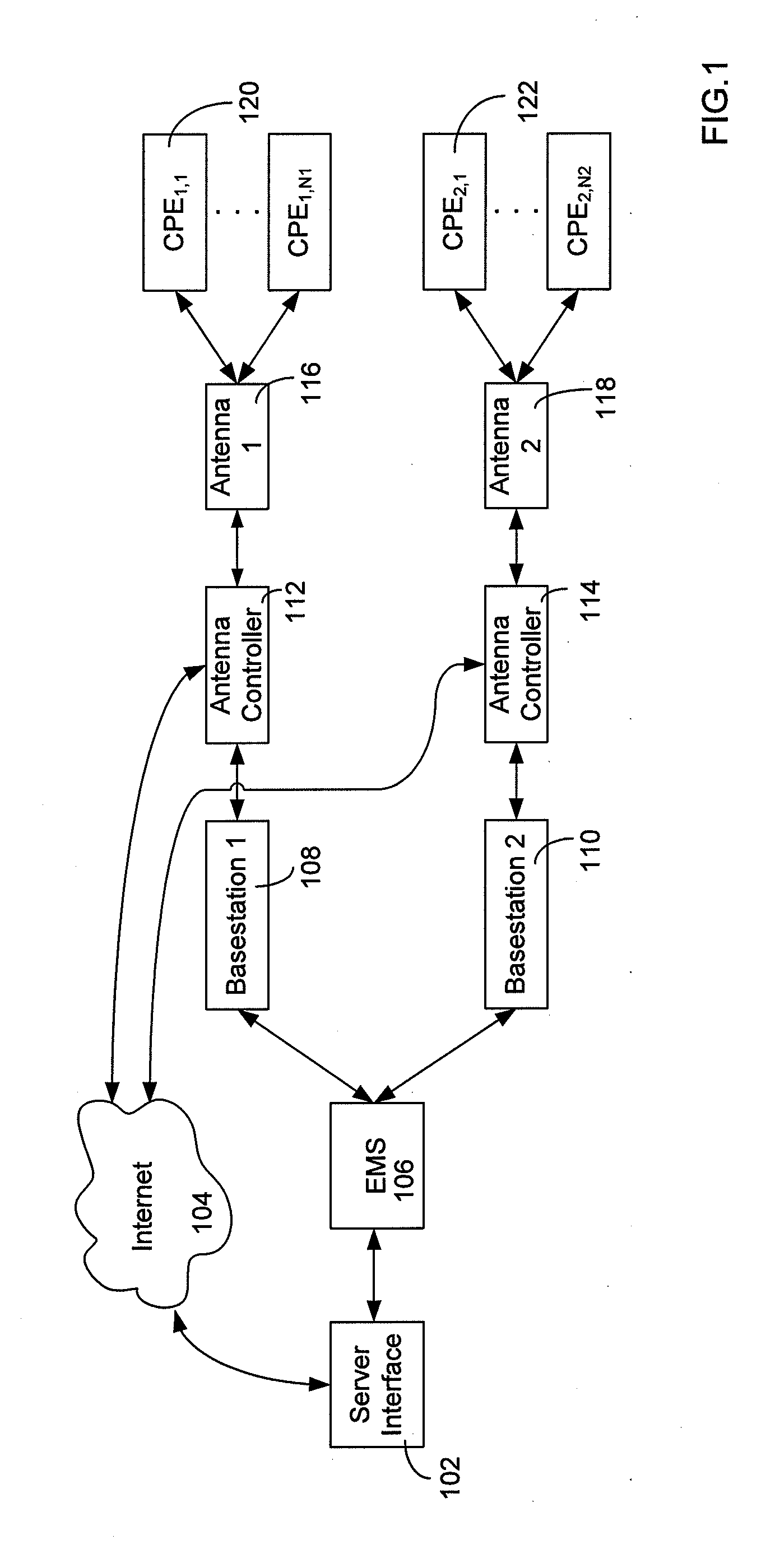Self-optimizing networks for fixed wireless access
- Summary
- Abstract
- Description
- Claims
- Application Information
AI Technical Summary
Benefits of technology
Problems solved by technology
Method used
Image
Examples
Embodiment Construction
[0030]FIG. 1 illustrates an exemplary high-level implementation of a fixed wireless network of the present invention. A server interface 102 having PC software loaded with the self-optimizing algorithm of the present invention interfaces with the vendor's element management system (“EMS”) 106. The EMS functions to control the basestations 108, 110 as well as possibly other equipment not shown. Each of the basestations 108, 110 control respective antennas 116, 108 via antenna controllers 112, 114. Additionally, the server interface 102 may directly access the antenna controllers 112, 114 via the internet 104 to receive measurements confirming those taken by the EMS 106 or to directly control the antenna controllers 112, 114. Each of the antennas 116, 118 provides service to customer premise equipment 120, 121 (“CPE”), such as subscriber stations (“SS”), within the antennas 116, 118 respective coverage area.
[0031]FIG. 2 illustrates an exemplary coverage map 200 for quad-sector sites 2...
PUM
 Login to View More
Login to View More Abstract
Description
Claims
Application Information
 Login to View More
Login to View More - R&D
- Intellectual Property
- Life Sciences
- Materials
- Tech Scout
- Unparalleled Data Quality
- Higher Quality Content
- 60% Fewer Hallucinations
Browse by: Latest US Patents, China's latest patents, Technical Efficacy Thesaurus, Application Domain, Technology Topic, Popular Technical Reports.
© 2025 PatSnap. All rights reserved.Legal|Privacy policy|Modern Slavery Act Transparency Statement|Sitemap|About US| Contact US: help@patsnap.com



